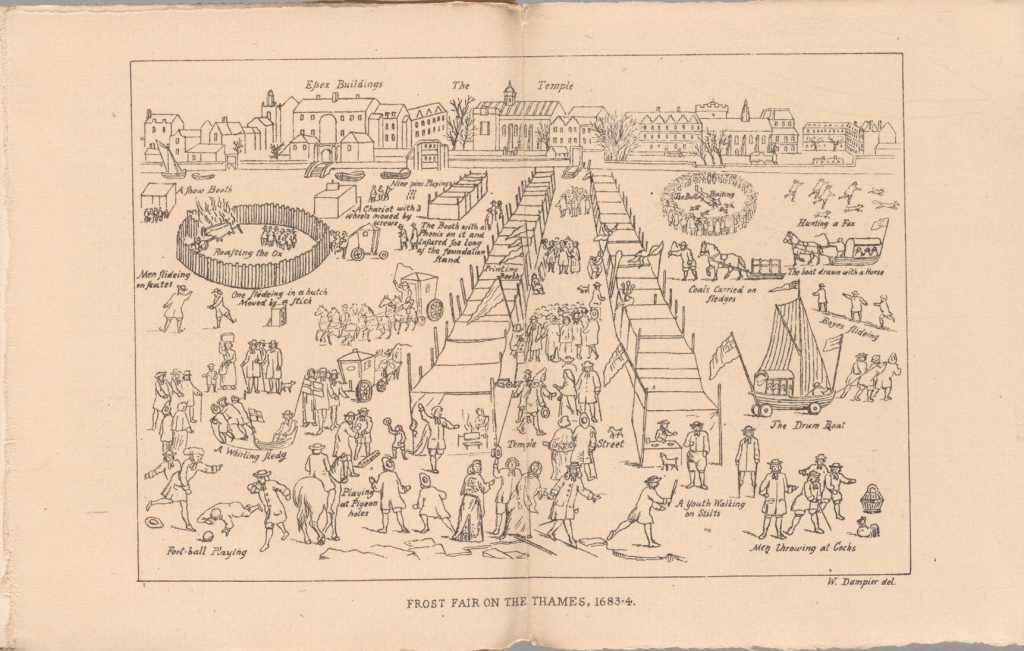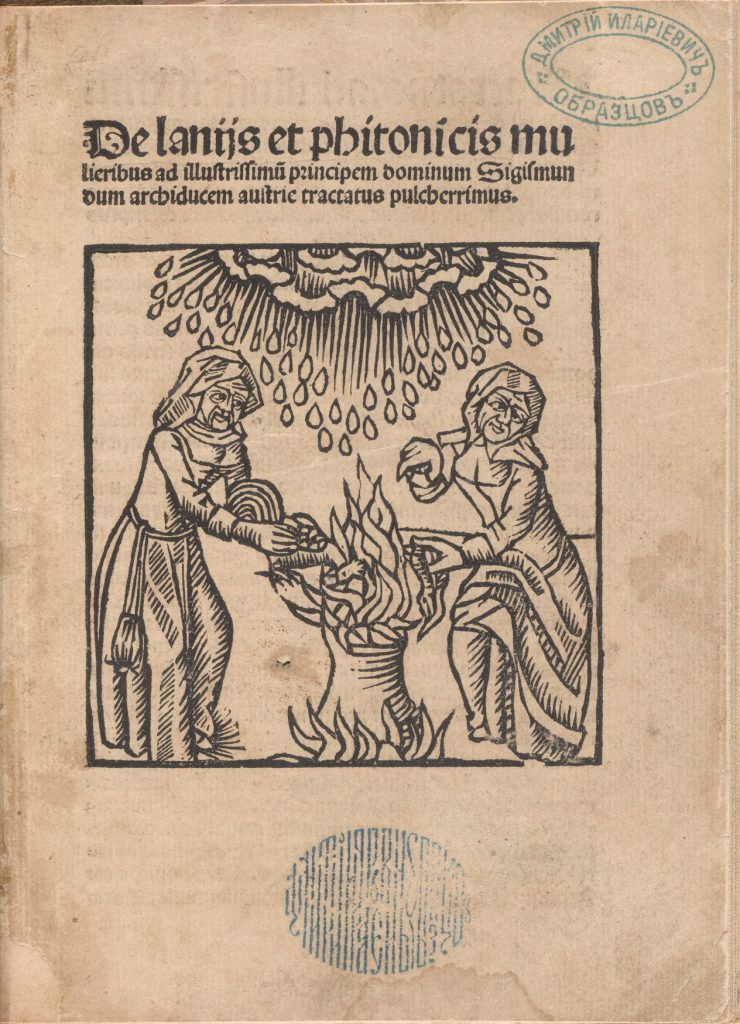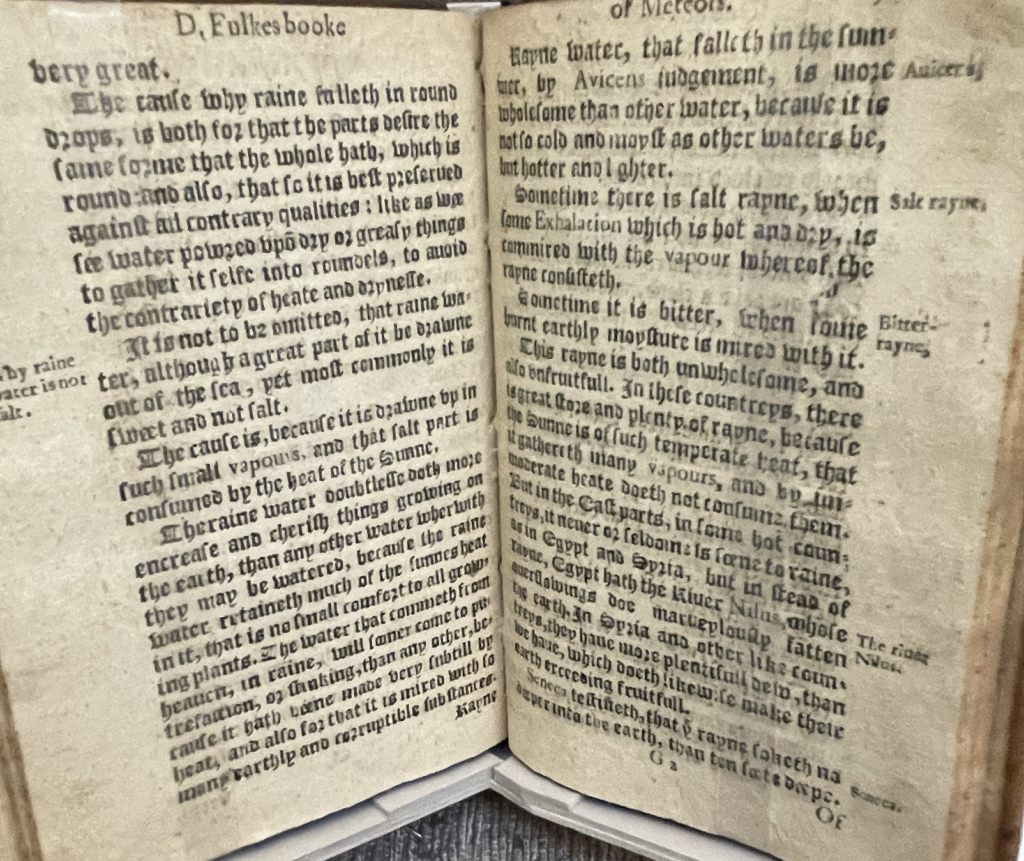This is part of a series of blog posts highlighting objects and archival documents from Social Climates: Power and the Environment in the Archives, an exhibition currently on view in the Kempner Gallery at Columbia’s RBML. Drawing on a wide array of RBML collections and materials, Social Climates explores the interconnections between culture, history, politics, and the natural world.
The following is adapted from the Social Climates exhibit essay text by Emily Runde, Curator of Medieval and Renaissance Collections.

The climate phenomenon known as the Little Ice Age extended from the fourteenth through the nineteenth centuries. Its impact was felt globally, if variably, with changes in ocean currents and salinity, growth of polar ice and glaciers, and disruptions to climatic systems contributing to drastic and severe weather. Ferocious storms, devastating droughts, and longer and bitterly cold winters led to flooding, crop failures, and famines, to food riots, epidemics, and even population collapse.
In the deep cold of Little Ice Ages winters the Thames would sometimes freeze so thoroughly in the winter that the ice could support temporary kiosks and heavy human traffic for some days or weeks. The best known of these so-called Thames Frost Fairs was held in the winter of 1683-1684, England’s coldest winter on record, when the Thames remained solidly frozen for two straight months, with ice reaching nearly a foot in thickness. This nineteenth-century illustration could have drawn on multiple eye-witness accounts for its recreation of that protracted carnival on the ice, which included games of football, coach racing, bull-baiting, and even the roasting of a whole ox.

During the late sixteenth and seventeenth centuries, when Europe was feeling the impact of the Little Ice Age most acutely, people found an outlet for their fears in scapegoating so-called witches. The conviction that storms and famine and plague could be attributed to a malicious minority appealed to many during this period of climatic upheaval.
Legal scholar Ulrich Molitor wrote this treatise on witchcraft called De lamiis in 1494. It was the first illustrated treatise on witchcraft, a fact which may explain why it was enormously popular, issued in forty-three editions between 1489 and 1669. Molitor was skeptical of witches’ power, attributing reports of witchcraft instead to demonic illusion. But the woodcut illustrations effectively undercut Molitor’s text, as they depict women engaging in many of the behaviors associated with witchcraft. Here, for example, two witches cast a snake and a rooster into a cauldron, thereby summoning the hailstorm that rains down from above.
Pushback against blaming Little Ice Age storms and other phenomena on witches also came from scientists in nascent fields like meteorology. This early work on scientific meteorology by William Fulke, A goodly gallerye with a most pleasaunt prospect into the garden of naturall contemplation draws heavily on classical scientific texts like Aristotle’s Meteorologica, rendering them accessible to an audience of English readers, and it evinces a marked preference for scientific explanations of unusual occurrences, whether of heavenly apparitions – optical phenomena, Fulke suggests – or the devil flying over the Thames – more likely a fiery meteor, in his estimation. His writing here on rain is likewise grounded in rational assessments of why it might at times be unwholesome or destructive.

Social Climates runs through September 30, 2022 in Kempner Gallery at Columbia’s RBML, 6th Floor Butler.
4 thoughts on “The Little Ice Age and Europe’s Witch Hunts”
Comments are closed.